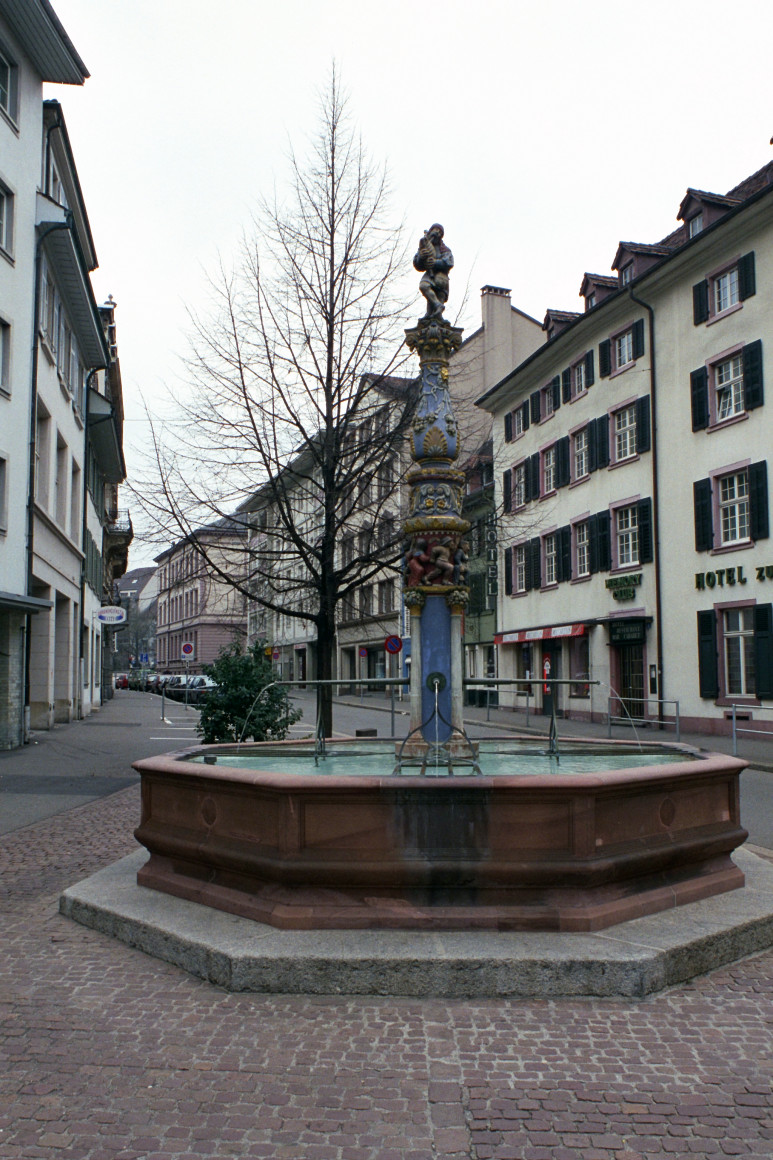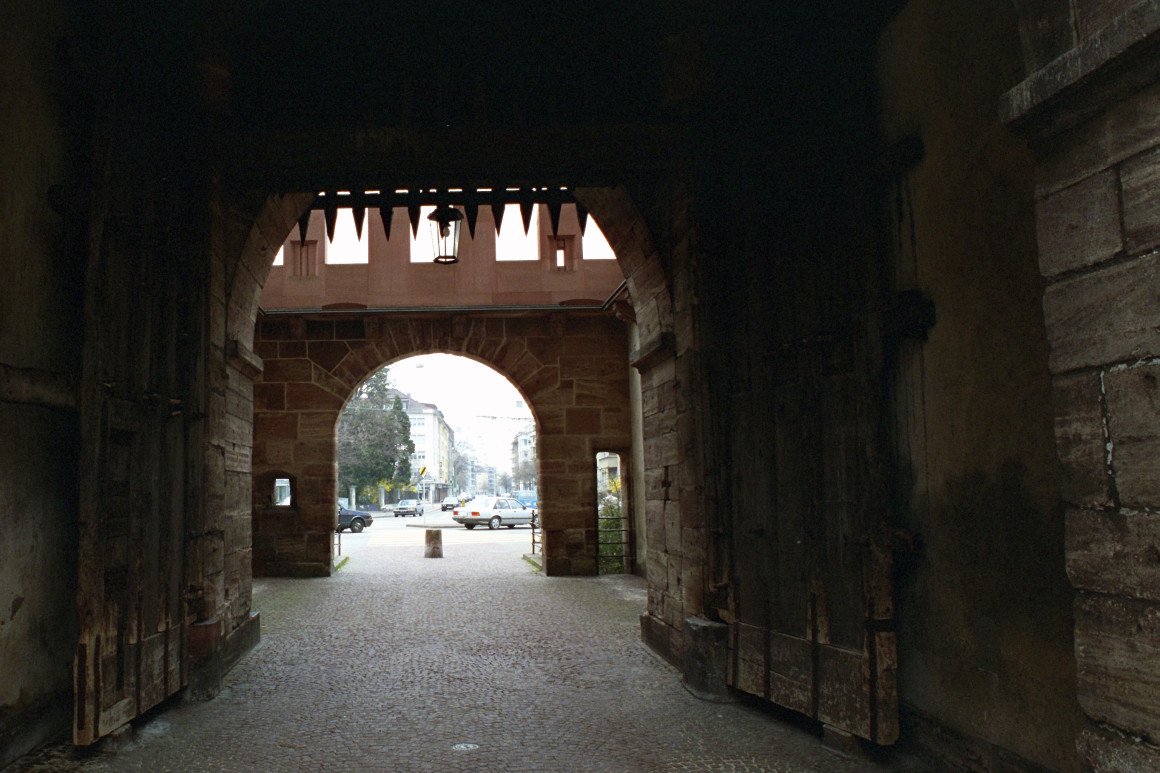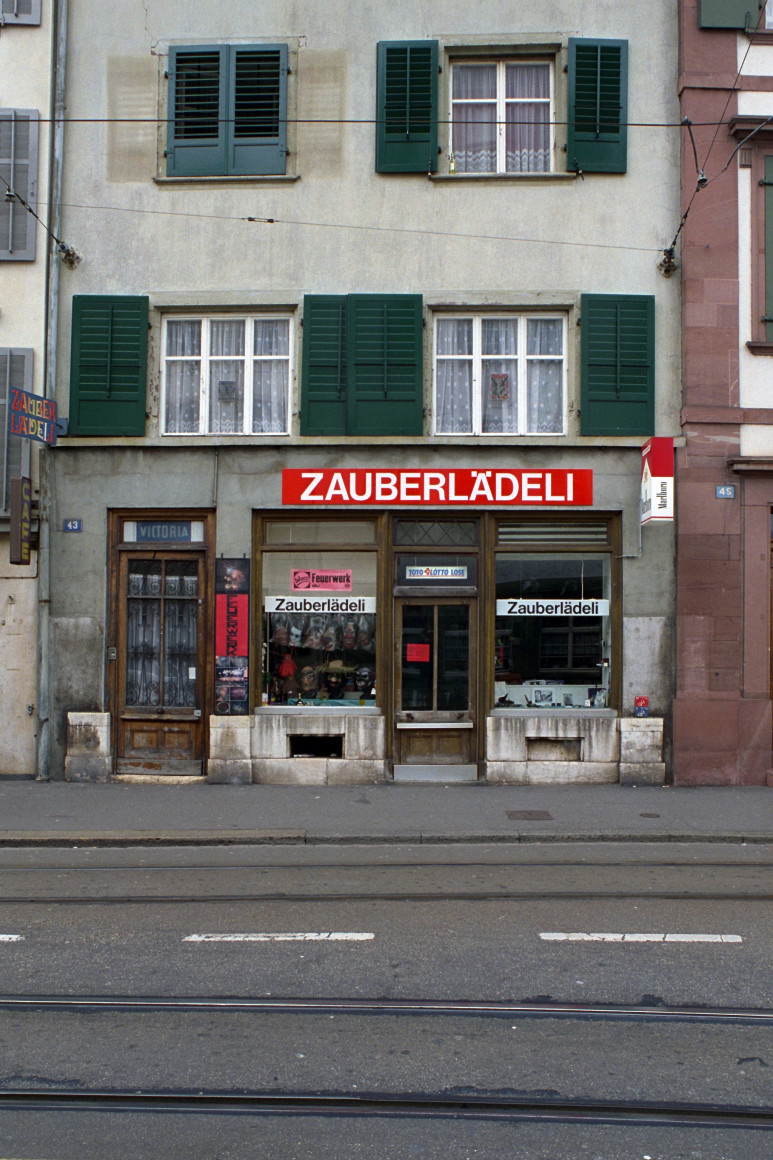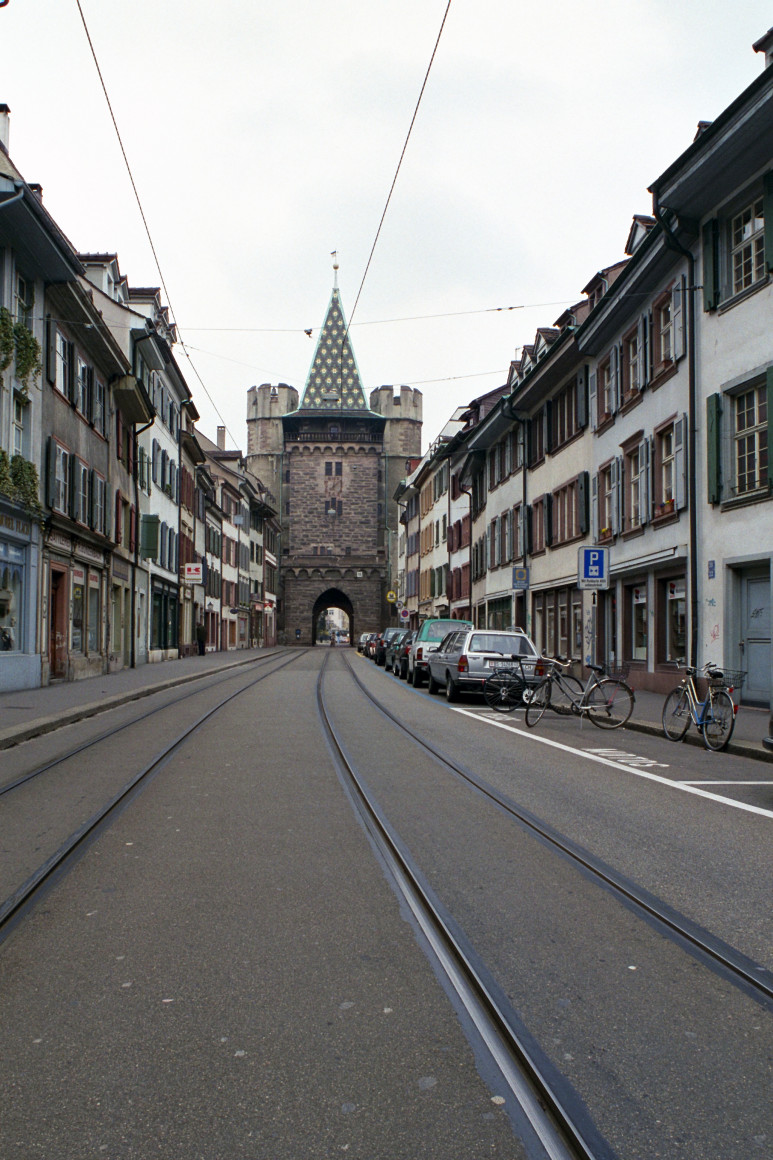Um das Jahr 1200 wurde die zweite grosse Stadtbefestigung erbaut. Aus diesem Grund verschob
man den Spalenschwibbogen, ein Tor der alten, inneren Stadtmauer an den Ausgang des
Petersgraben.
Das aus drei zusammengefügten Türmen bestehende Spalentor, war das schönste der einst
sieben, zur neuen Stadtmauer gehörenden, Tore.
Beim Bau des Tores wurde sehr hohen Wert auf das Erscheinungsbild gelegt, da dieses in
Richtung Elsass, dem einst wichtigsten Handelspartner der Stadt, schaute. Die Überdachung
besteht aus farbigen, glasierten Ziegeln. Der Hauptturm ist quadratisch, die Nebentürme
sind rund.
In der zweiten Hälfte des 15. Jahrhunderts wurde das Spalentor durch ein Vortor verbreitert.
Das Tor besitzt zwei Arten von Fallgitter, die auch heute noch bewundert werden können.
Bis Mitte des 19. Jahrhunderts war Basel durch die Stadtmauer geschützt. 1859 wurde ein
Gesetzt zur Erweiterung der Stadt erlassen, was zum Abtragen der Stadtmauer und zum
Auffüllen der Gräben führte. Drei Tore bestehen noch heute; das Spalentor, das
St. Johannstor, das St. Albantor. Teile der Stadtmauer sind ebenfalls noch vorhanden. Das
Spalentor diente zeitweise auch als Gefängnis.
An dem Tor (Stadtseite) befindet sich ein von Melchior Berri entworfener Briefkasten aus
der Zeit des kantonalen Postwesens. Gleichzeitig wurde eine heute äusserst wertvolle
Briefmarke ("Basler Dybli"= Basler Täubchen) mit gleichem Design entworfen. Das Basler
Dybli ist die erste mehrfarbige gedruckte und im Prägedruck hergestellte Briefmarke der
Welt.
Innenbesichtigungen des Spalentor sind möglich. Feuerwache, Kornhausgasse 18
Around 1200, a second outer fortification of the town was built. That is why the flying
buttress, a gate of the old interior city wall, was moved to the other end of the
Petersgraben. The Spalentor, which consists of three joined towers, was the most beautiful
of the formerly seven existing gates which had all belonged to the new city wall. When
the gate was constructed, it was very important that it had a good overall appearance
because it closed off the entrance to Basel from the Alsatians who used to be the most
important trading partner of the city. The roof was covered with colourful glazed tiles.
Whereas the main middle tower is retangular, the other two towers are round. In the second
half of the 15th century, the Spalentor was widened by building another gate in front of
it. The gate has two kinds of portcullises which can still be seen today.
Up to the middle of the 19th century, Basel had been protected by a city wall. But in 1859,
a law was enacted in favour of the expansion of the town. As a consequence, the city wall
had to give way and the ditches were filled up. However, there are still three existing
gates; the Spalentor, the St. Johannstor and the St. Albantor. Moreover, some parts of the
ancient city wall are still around. At times, the Spalentor also served as a prison.
On the gate (towards the town) one can see a letterbox dating back to the time of the
cantonal postal system. It has been designed by Melchior Berri. Additionally, a stamp with
the same design ("Basler Dybli" = dove of Basel) came into use, which has a great value
today. The "Basler Dybli" is the first multicoloured stamp in the world.
It is possible to visit the inside of the Spalentor (Feuerwache, Kornhausgasse 18).
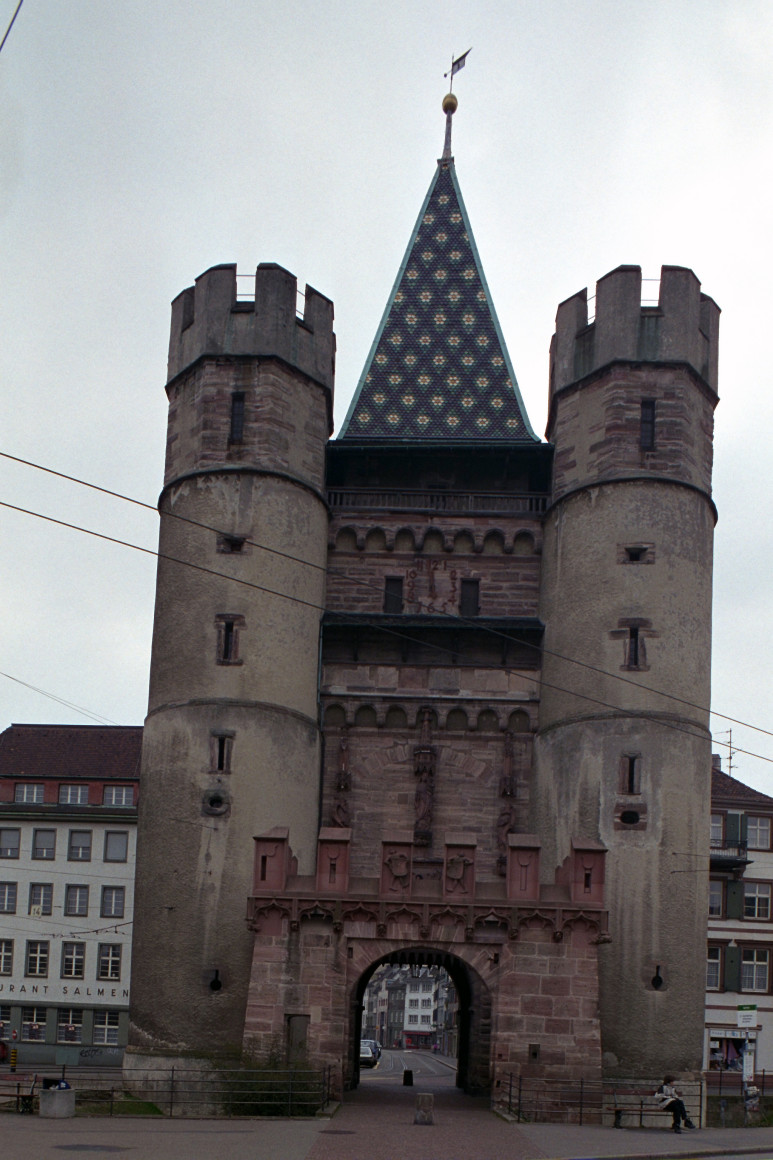
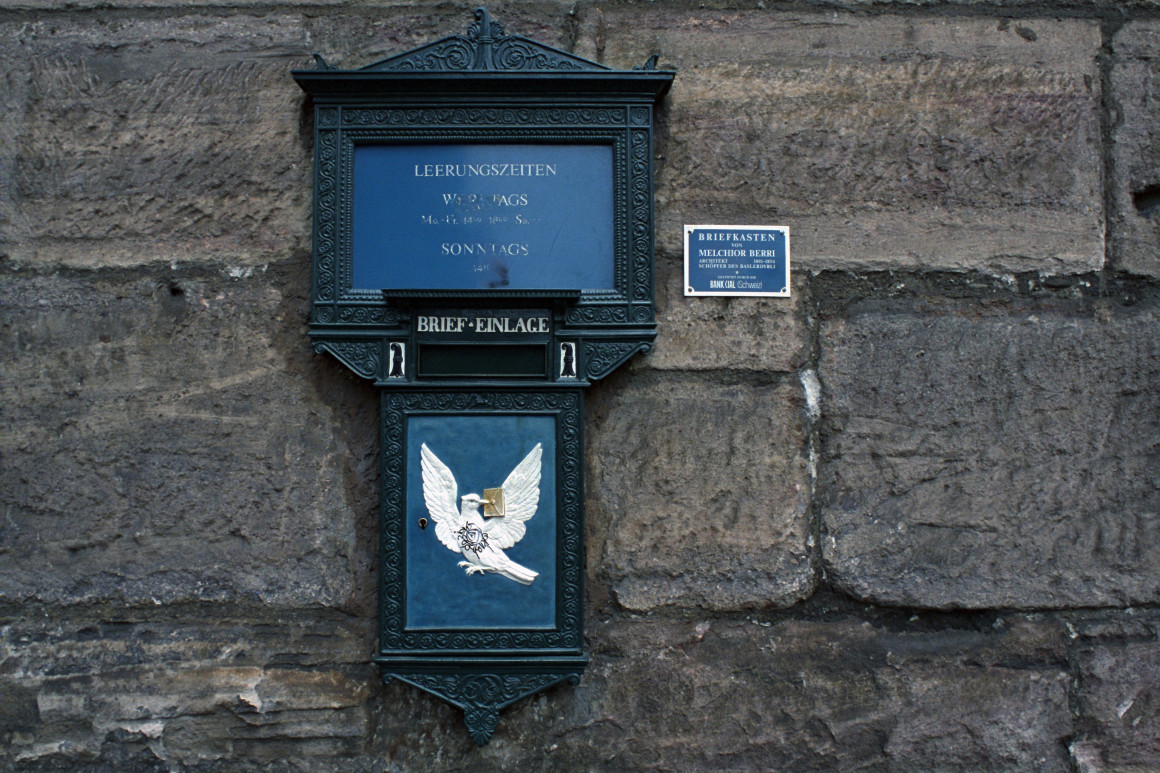
Der in der Schweiz zu den schönsten Reanissancebrunnen gehörende Holbeinbrunnen, stand
ursprünglich vor dem Spalentor.
Im Jahre 1839 wurde er an die Spalenvorstadt versetzt.
Die reichverzierte Säule stammt aus dem 16. Jahrhundert. Auf dem Stock ist ein zum Tanz
blasender Dudelsackpfeiffer zu sehen.
Nach der Versetzung an die Spalenvorstadt, wurde der Brunnen mit einem achteckigen Trog
versehen.
Das Original der Säule kann im Historischen Museum bewundert werden.
The Holbein Fountain, which is one of the most beautiful renaissance fountain of
switzerland, used to have its place in front of the Spalentor.
In 1839, it was moved to the Spalenvorstadt. The column with its precious ornaments goes
back to the 16th century. On its stuff one can see a figure playing bagpipes. After the
fountain had been moved to the Spalenvorstadt, an octagonal tub was added to it.
The original of the column is in the historical museum.
